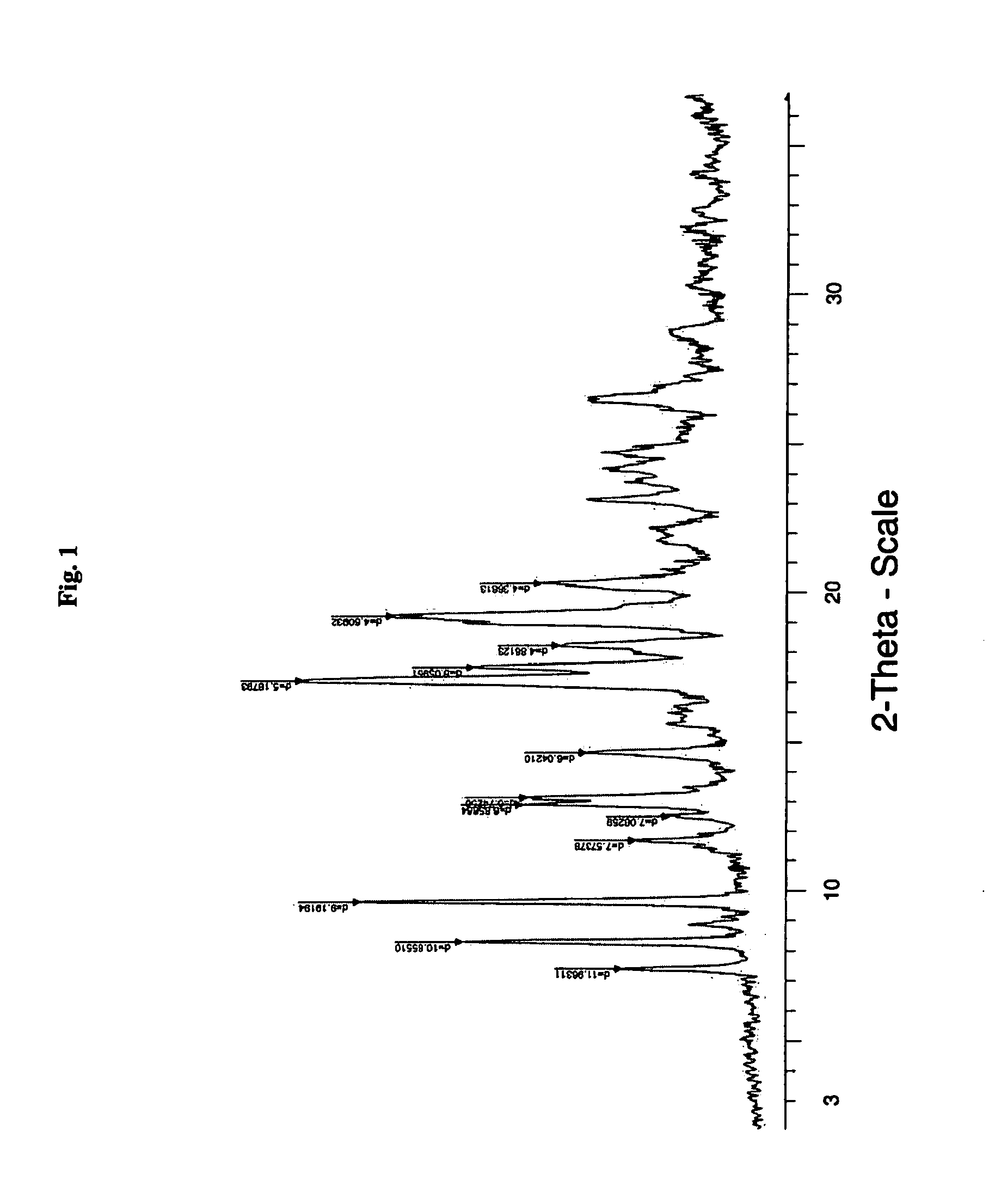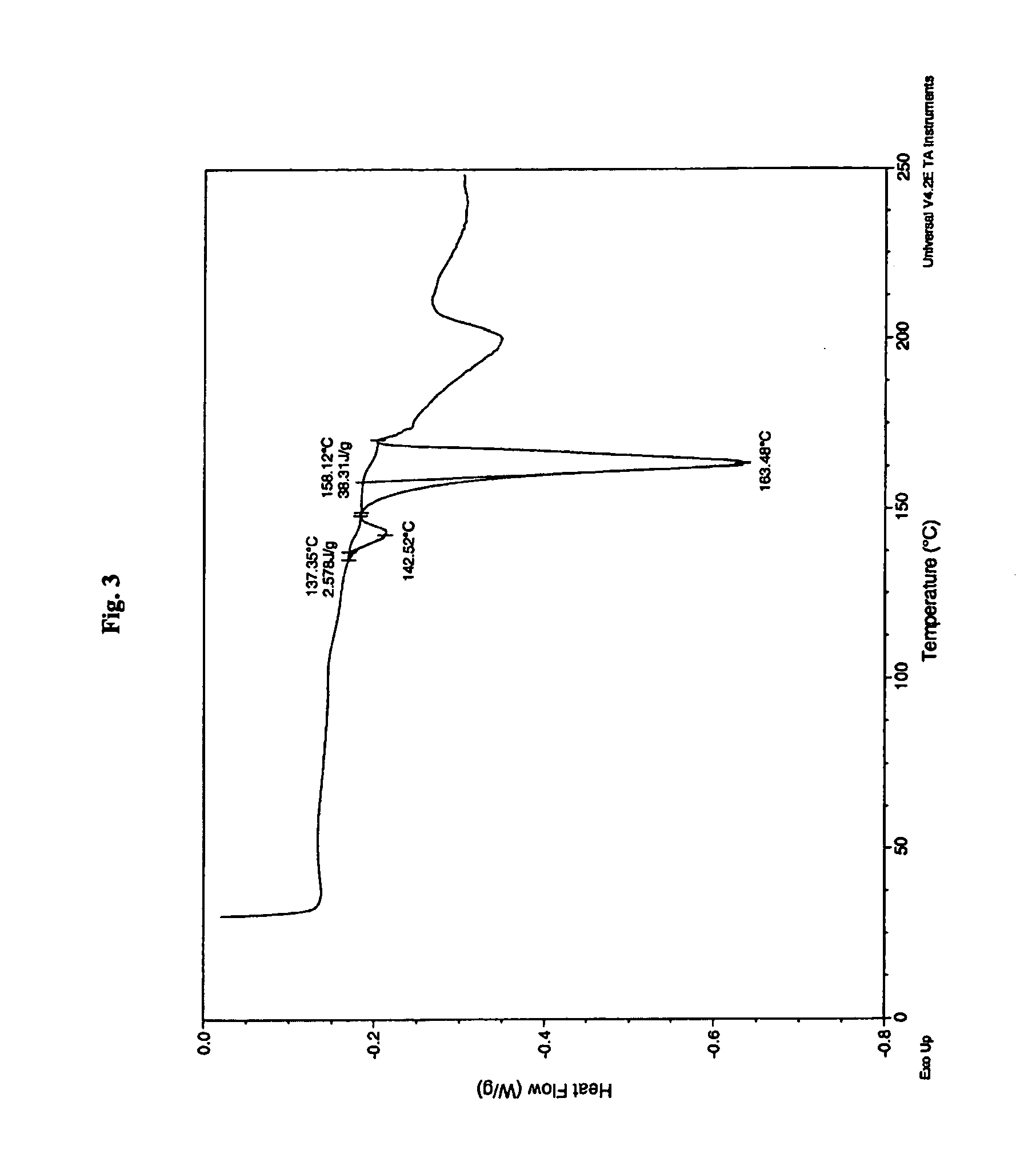Co-Crystals and Pharmaceutical Compositions Comprising the same
a technology applied in the field of crystals and pharmaceutical compositions comprising the same, can solve the problems of inability to broadly effective treat the debilitating inability to effectively prevent the progression of chronic hcv, and significant side effects of interferons, etc., to achieve improved dissolution, improved aqueous solubility, and improved anti-hcv vaccine prospects.
- Summary
- Abstract
- Description
- Claims
- Application Information
AI Technical Summary
Benefits of technology
Problems solved by technology
Method used
Image
Examples
example 1
Preparation by Ball-Milling Method
[0053]VX-950 and an equal molar equivalent of a co-crystal former (e.g., 2,4-dihydroxybenzoic acid or 3-methoxy-4-hydroxybenzoic acid) can be mixed with a solvent (e.g., methyl ethyl ketone or ethyl acetate). The components can then be milled using a Wig-L-Bug apparatus, e.g., Retsch MM200 (GlenMills Inc, Clifton, N.J.) for 10 minutes at the frequency of 15 Hz. After milling, a batch is dried, e.g., in a vacuum oven at 75° C. for 2 hours, to give a co-crystal of the invention.
example 2
Preparation by Melting Method
[0054]VX-950 and an equal molar equivalent of a co-crystal former (e.g., 2,4-dihydroxybenzoic acid or 3-methoxy-4-hydroxybenzoic acid) can be mixed, e.g., by vortex for 5 minutes, with or without a solvent. The mixture is then placed in a reaction block (e.g., RR 98072 from Radley Discovery Technologies) with the lid closed and heated to the endotherm. The mixture is held for 30 minutes at the endotherm temperature, and then the resulting mixture was cooled off under ambient conditions with the lid off, and the solvent, when used, removed to give a co-crystal of the invention.
example 3
Preparation by Solvent-Evaporation Method
[0055]2,4-Dihydroxybenzoic acid: 200 mg of VX-950 and 80 mg of 2,4-dihydroxybenzoic acid (Sigma Chemicals Co., St. Louis, Mo., USA) were charged into a 20 mL glass vial. To the vial were then added 100 μL of dichloromethane and 100 μL of acetonitrile. The vial containing the mixture was capped and the mixture was stirred at the room temperature with a magnetic stir bar at 600 rpm for 16 hours. The crystalline solid was isolated and the liquid on its surface was removed by filter paper to give a co-crystal of VX-950 and 2,4-dihydroxybenzoic acid.
[0056]3-Methoxy-4-hydroxybenzoic acid: 200 mg of VX-950 and 80 mg of 3-methoxy-4-hydroxybenzoic acid (Sigma Chemicals Co., St. Louis, Mo., USA) were charged into a 20 mL glass vial. To the vial were then added 100 μL of dichloromethane and 100 μL of acetonitrile. The vial containing the mixture was capped and the mixture was stirred at the room temperature with a magnetic stir bar at 600 rpm for 72 hou...
PUM
| Property | Measurement | Unit |
|---|---|---|
| Temperature | aaaaa | aaaaa |
| Temperature | aaaaa | aaaaa |
| Temperature | aaaaa | aaaaa |
Abstract
Description
Claims
Application Information
 Login to View More
Login to View More - R&D
- Intellectual Property
- Life Sciences
- Materials
- Tech Scout
- Unparalleled Data Quality
- Higher Quality Content
- 60% Fewer Hallucinations
Browse by: Latest US Patents, China's latest patents, Technical Efficacy Thesaurus, Application Domain, Technology Topic, Popular Technical Reports.
© 2025 PatSnap. All rights reserved.Legal|Privacy policy|Modern Slavery Act Transparency Statement|Sitemap|About US| Contact US: help@patsnap.com



